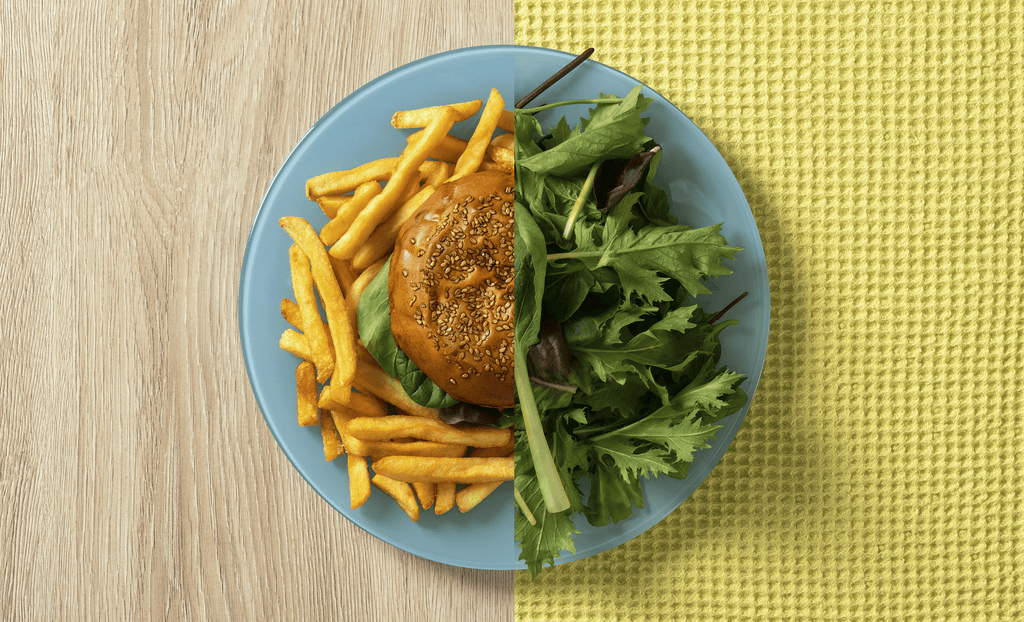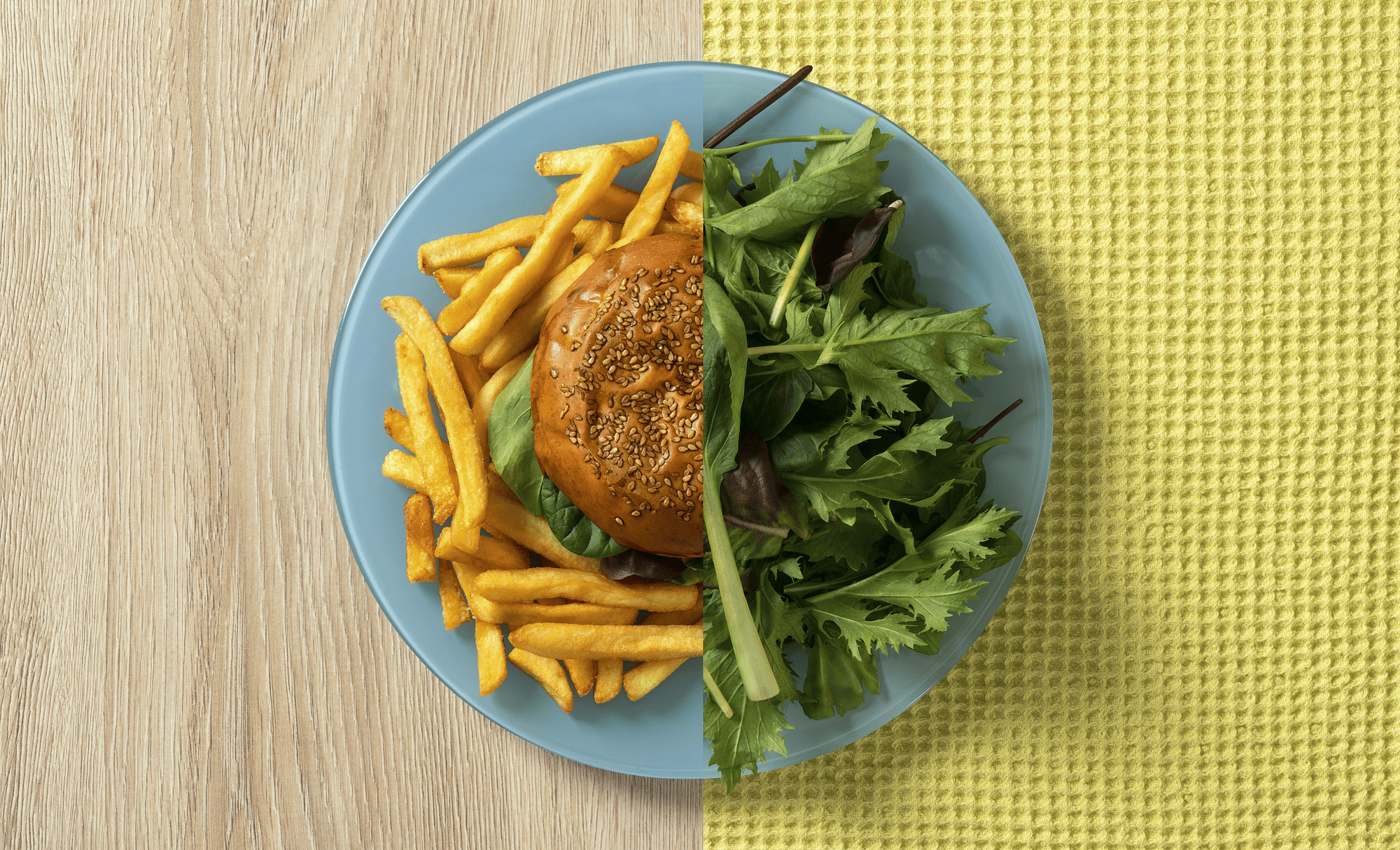Trade Refined Grains for Whole Grains
Grains are made up of three main parts which are the bran, the endosperm, and the germ. Each of these parts is full of healthy nutrients. Bran contains antioxidants, B vitamins, and fiber1. The germ is full of B vitamins, protein, minerals, and healthy fats1. Finally, the endosperm is what contains the grain’s carbohydrates, as well as additional protein and a small number of vitamins and minerals1.
Whole grains are grains that contain these three main parts in their original proportions1. On the other hand, refined grains have had one or more of these parts removed when being processed1. White flour and white rice are the most common examples of refined grains, having both their bran and germ removed1.
This deprives you of the healthy nutrients located in the bran and germ, resulting in food that’s mostly loaded with carbs with much smaller amounts of proteins, vitamins, and minerals. Eating whole grains instead is an easy way to get the most out of your sources of carbs. You can argue that removing grains altogether would be an even better alternative to whole grains, but to some, this can be both and, in some cases, not realistic.
The only exception to this rule is when whole grains cause digestive distress. Whole grains contain more fiber making it harder to digest for some people. is rice which can be a great alternative for people s.
Cereal Alternatives
For the general population, breakfast cereals, pop, and coffee/tea sweeteners are some of the most common sources of sugar in our daily lives. What’s so bad about sugar? Plenty of studies show that eating too much of it can negatively impact your health, such as weight gain2, heart disease3, acne4, and accelerated skin aging5 That doesn’t mean you need to cut sugar out of your life completely but reducing your sugar intake with mindful substitutes can go a long way in supporting a healthier lifestyle.
Instead of sugar laden breakfast cereals, opt for things like rolled oats, chia pudding, muesli and fruit. These alternatives . As an upgrade, pair these foods with protein. Doing so can . These healthier alternatives often have significantly reduced sugar content on the nutrition label, so you know you’re being proactive about cutting down on sugar.
Pop Alternatives
While majority drinks are unhealthy for you, studies show that diet sodas support weight loss with reduced sugar content7. Diet versions of sodas are fantastic because they often have a very similar taste to their non-diet counterparts, making them one of the least noticeable changes to your palette while still being noticeable to your body’s overall health. Opt for stevia sweetened pop or fill that pop craving. Studies have shown that using stevia can reduce your blood sugar levels8 and avoids the
Balance Red Meat Consumption with Fish
The old idea that red meat is inherently bad for you has been debunked. With a balanced diet and lifestyle, it’s been proven that there can be a place for red meat in your diet. In fact, red meat can be very nutrient dense. However, along with everything else in life, too much of one thing can be bad. That’s because the overconsumption of red meat can result in high amounts of saturated fat and throw off the balance between saturated and polyunsaturated fats in your diet. This balance heavily influences inflammation in the body.
On the other hand, fats in fish contain omega-3 fatty acids which are great for your body’s overall health9. Benefits of omega-3 fatty acids are numerous and can include improved eye health, brain health, reduced risk of heart disease, improvement of mental disorders, bone and joint health, as well as many others11. So, consider cooking up a nice cut of salmon for your next meal for a healthier source of protein.
Swap Candy and Chips for Fruits and Vegetables
The cooking process and high heat, chips can contain trans fats and candy has high amounts of refined sugar, both of which have negative effects that we’ve already talked about at length. So, instead of reaching for candy, consider some of these great alternatives.
- Carrot sticks – They’re delicious and refreshing snacks that have a satisfying crunch to them. If you want a bit more flavour to go with it, consider eating it with healthy dip options like hummus or Greek yogurt. This makes for a great, low-calorie snack with plenty of nutrients and vitamins.
- Fruit (in moderation) - Although high amounts of fruit can contribute to sugar levels, they contain fibre, antioxidants, and vitamins.
- Seaweed snacks - Loaded with micronutrients, seaweed snacks offer a low calorie snack that can take the place of chips.
- Nuts and seeds – As long as they are consumed in moderation, nuts and seeds contain good sources of fats and can be surprisingly satiating.
Bonus Tip: Consider Adding a Multivitamin to Your Diet
This one isn’t really a healthy food swap, but it’s still a great habit to incorporate. In this article, we’ve covered plenty of healthy alternatives. The common theme among them is the addition of nutrients and vitamins to your diet. A lot of foods available to us are processed and refined, stripping it of vital nutrients we need. While it’s best to get those nutrients from our diet, sometimes it’s just not possible to get all the vitamins we need. Using Platinum Naturals multivitamins as insurance for any missed nutrients from your diet is a great way to ensure your micronutrient intake is covered no matter what your dietary habits are.
References
- “What's a Whole Grain? A Refined Grain?” What's a Whole Grain? A Refined Grain? | The Whole Grains Council, https://wholegrainscouncil.org/whole-grains-101/whats-whole-grain-refined-grain.
- https://www.ncbi.nlm.nih.gov/pmc/articles/PMC6959843/
- https://pubmed.ncbi.nlm.nih.gov/33855443/
- https://www.healthline.com/nutrition/foods-that-cause-acne#TOC_TITLE_HDR_2
- https://pubmed.ncbi.nlm.nih.gov/28420091/
- https://www.ncbi.nlm.nih.gov/pmc/articles/PMC8234141/
- https://academic.oup.com/ajcn/article/95/3/555/4578292
- https://www.healthline.com/nutrition/is-stevia-safe
- https://thecookingbar.com/meat-vs-seafood/
- https://www.nhs.uk/live-well/eat-well/food-types/different-fats-nutrition/#:~:text=Eating%20too%20much%20saturated%20fats,liver%2C%20where%20it's%20disposed%20of
- https://www.healthline.com/nutrition/17-health-benefits-of-omega-3#TOC_TITLE_HDR_16








